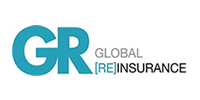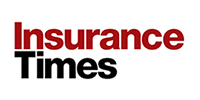Verisk’s Giovanni Garcia discusses the changing nature of catastrophe risk, the surge in so-called frequency perils, and how advances in modelling and data integration are reshaping insurers’ understanding of global exposure.
Global catastrophe losses are edging higher, despite the lack of a large US hurricane insured loss headline.

According to a recent report from Verisk, the long-term annual average for insured cat losses now sits at around $152bn.
This year appears on trend, as the third quarter draws to a close, lacking a major hurricane US landfall, but already reaching $114bn of global insured cat loss, according to Aon.
Verisk’s aggregate figure for annual insured cat losses the past five years sits at $132bn, and $104bn for the previous five years.
“The number is gradually changing as we add new models and new data, but also because losses are evolving,” said Giovanni Garcia (pictured), senior vice president of business development at Verisk.
Verisk’s catastrophe risk modelling business serves a large proportion of the global property catastrophe re/insurance industry.
According to Garcia, lack of major hurricanes is only part of the narrative; secondary perils are also a major trend. The Los Angeles wildfires, for instance, top this year’s list of costly catastrophe events.
Two-thirds of annual catastrophe losses now stem from these perils, renamed frequency perils to reflect their prominence, including severe thunderstorms, winter storms, inland floods and wildfires.
Garcia prefers the updated terminology as more representative to the figures.
“When we call something secondary, we just think less of it, but these perils now represent the majority of insured losses,” he said.
Garcia stressed that insured wildfire losses earlier this year alone totalled as much as $40bn.
“Added to that, over the past five years, the number of billion-dollar severe thunderstorm events has increased by 59%,” he added.
Loss drivers
Climate change is part of the story of frequency perils, such as storms, fires and floods, but Garcia cautioned against simplistic explanations attributing everything to it.
“There are interconnected reasons for the increase,” he said. “Climate is one, but not the major driver. The key factor is the growing value of property itself.”
Property replacement values within Verisk’s model territories have risen 7% a year on average, doubling in a decade, Garcia observed.
Urbanisation compounds the effect, he noted, with more people living in hazard-prone megacities such as Tokyo, Los Angeles and Mexico City.
“Beachfront communities keep getting bigger. Everything costs more to rebuild – materials, labour, everything – so even the same storm today produces higher losses,” he said.
This dynamic feeds a widening protection gap. More than 60% of global natural catastrophe losses are uninsured, he said, with Asia the starkest example: “Only around 12% of losses there are insured.”
Modelling the atmosphere
For Verisk, the response lies in continual model expansion and integration. The company is investing in new flood models for Malaysia, Indonesia, Ireland, New Zealand and Australia, alongside perils such as Japanese hail, Garcia revealed.
Garcia cited Verisk’s forthcoming Synergy Studio platform, due in 2026, as well as its Model Exchange partnership network, as ways to enable clients to access a wider suite of models more flexibly.
“If a client says, ‘We need a Nepal model,’ we can point to a partner that has it,” Garcia said.
Perhaps most ambitiously, Verisk is developing a fully correlated atmospheric model linking major basins around the globe.
“Today we model the North Atlantic and Pacific independently,” said Garcia. “We’re completing the first wave of a model that can simulate them together, incorporating El Niño and La Niña directly.”
Garcia said he expects this unified approach to deepen understanding of how weather systems interact.
“We’ll effectively be modelling the atmosphere all at once. That will give reinsurers a truly global view of correlation – and that’s the future of catastrophe modelling,” he added.










No comments yet